New Zealand Labour Party
The New Zealand Labour Party (Māori: Rōpū Reipa o Aotearoa),[8] or simply Labour (Māori: Reipa), is a centre-left political party in New Zealand.[3] The party's platform programme describes its founding principle as democratic socialism,[9][10] while observers describe Labour as social-democratic and pragmatic in practice.[1][2] The party participates in the international Progressive Alliance.[6]
New Zealand Labour Party Rōpū Reipa o Aotearoa | |
|---|---|
| Abbreviation | NZLP |
| President | Claire Szabó |
| General Secretary | Dianna Lacy (acting) |
| Leader | Jacinda Ardern |
| Deputy Leader | Kelvin Davis |
| Founded | 7 July 1916 |
| Merger of | Social Democratic Party United Labour Party |
| Headquarters | Fraser House, 160–162 Willis St, Wellington 6011 |
| Youth wing | Young Labour |
| LGBT+ wing | Rainbow Labour |
| Ideology | Social democracy[1][2] |
| Political position | Centre-left[3][4][5] |
| International affiliation | Progressive Alliance[6] |
| Colours | Red |
| Slogan | "Let's Keep Moving"[7] |
| MPs in the House of Representatives | 46 / 120 |
| Website | |
| labour.org.nz | |
| Part of a series on |
| Organised labour |
|---|
 |
|
Labour movement
|
|
Academic disciplines |
The New Zealand Labour Party formed in 1916 out of various socialist parties and trade unions. It is the country's oldest political party still in existence.[11] Alongside its main rival, the New Zealand National Party, Labour has dominated New Zealand governments since the 1930s.[12] As of 2020, there have been six periods of Labour government under ten Labour prime ministers.
The party first came to power under prime ministers Michael Joseph Savage and Peter Fraser from 1935 to 1949, when it established New Zealand's welfare state. It governed from 1957 to 1960, and again from 1972 to 1975 (a single term each time). In 1974, the prime minister Norman Kirk died in office, which contributed to a decline in party support. Up to the 1980s, the party advocated a strong role for governments in economic and social matters. When it governed from 1984 to 1990, Labour instead privatised state assets and reduced the role of the state in the economy; Labour prime minister David Lange also introduced New Zealand's nuclear-free policy. Labour again became the largest party from 1999 to 2008, when it governed in coalition with, or based on negotiated support from, several minor parties; Helen Clark became the first Labour prime minister to lead her government through the third term in office.
Since the 2008 general election Labour has comprised the second-largest caucus represented in the House of Representatives. In the 2017 general election the party under Jacinda Ardern returned to prominence with its best showing since the 2005 general election, winning 36.9% of the party vote and 46 seats.[13] On 19 October 2017, Labour formed a minority coalition government with New Zealand First, with confidence and supply from the Green Party. Jacinda Ardern currently serves as the party leader and prime minister, while Kelvin Davis is the deputy leader.
History
The New Zealand Labour Party was established on 7 July 1916 in Wellington,[11] bringing together socialist groups advocating proportional representation; the abolition of the country quota; the recall of members of Parliament; as well as the nationalisation of production and of exchange.[14] Despite its Wellington origins, the West Coast town of Blackball is often regarded as the birthplace of the party,[15] as it was the location of the founding of one of the main political organisations which became part of the nascent Labour Party. The party was created by, and has always been influenced by, the trade unions, and in practice Labour Party politicians regard themselves as part of a broader labour movement and tradition.[16]
Formation
The New Zealand Labour Party was an amalgamation of a number of early groups, the oldest of which was founded in 1901. The process of unifying these diverse groups into a single party was difficult, with tensions between different factions running strong.[17]
At the turn of the century, the radical side of New Zealand working class politics was represented by the Socialist Party, founded in 1901. The more moderate leftists were generally supporters of the Liberal Party.[18] In 1905, a group of working-class politicians who were dissatisfied with the Liberal approach established the Independent Political Labour League,[19] which managed to win a seat in Parliament in the 1908 election.[20][21] This established the basic dividing line in New Zealand's left-wing politics – the Socialists tended to be revolutionary and militant, while the moderates focused instead on progressive reform.[22]
In 1910, the Independent Political Labour League was relaunched as an organisation called the Labour Party, distinct from the modern party. Soon, however, the leaders of the new organisation decided the additional effort was needed to promote left-wing cooperation, and organised a "Unity Conference". The Socialists refused to attend, but several independent labour activists agreed. The United Labour Party was born.[22]
Soon afterward, the labour movement was hit by the Waihi miners' strike, a major industrial disturbance prompted by radicals in the union movement.[23] The movement was split between supporting and opposing the radicals, and in the end, the conservative government of William Massey suppressed the strike by force. In the strike's aftermath, there was a major drive to end the divisions in the movement and establish a united front. Therefore another Unity Conference was called, and this time the Socialists attended.[23] The resulting group was named the Social Democratic Party.
Not all members of the United Labour Party accepted the new organisation, however, and some continued under their own banner. Gradually, however, the differences between the Social Democrats and the ULP Remnant broke down, and in 1915 they formed a unified caucus both to oppose Reform better and to differentiate themselves from the Liberals.[24] A year later yet another gathering was held. This time, all major factions of the labour movement agreed to unite, establishing the modern Labour Party.[25]
Electoral record of constituent parties pre-1916 Labour
| Term | Electorate | Party | Elected MPs | ||
|---|---|---|---|---|---|
| 1908–1910 | 17th | Wellington East | Ind. Labour League | David McLaren | |
| 1910–1911 | Changed allegiance to: | Labour | |||
| 1911–1912 | 18th | Wellington South | Labour | Alfred Hindmarsh | |
| 1912–1914 | Changed allegiance to: | United Labour | |||
| 1914–1916 | 19th | Wellington South | United Labour | ||
| 1911–1914 | 18th | Grey Lynn | Labour | John Payne | |
| 1914–1916 | 19th | Grey Lynn | Independent Labour | ||
| 1916 | Changed allegiance to: | Independent | |||
| 1911–1913 | 18th | Otaki | Labour | John Robertson | |
| 1913–1914 | Changed allegiance to: | Social Democrat | |||
| 1911–1912 | 18th | Wanganui | Independent Labour | Bill Veitch | |
| 1912–1914 | Changed allegiance to: | United Labour | |||
| 1914–1916 | 19th | Wanganui | United Labour | ||
| 1916 | Changed allegiance to: | Independent | |||
| 1913–1914 | 18th | Grey | Social Democrat | Paddy Webb | |
| 1914–1916 | 19th | Grey | Social Democrat | ||
| 1913–1914 | 18th | Lyttelton | Social Democrat | James McCombs | |
| 1914–1916 | 19th | Lyttelton | Social Democrat | ||
| 1914–1916 | 19th | Dunedin North | United Labour | Andrew Walker | |
Early years
Almost immediately, the new Labour Party became involved in the acrimonious debate about conscription, which arose during World War I – the Labour Party strongly opposed conscription,[26] several leading members were jailed and expelled from Parliament for their stand against the war: Peter Fraser, Harry Holland, Bob Semple and Paddy Webb.[27] The loss of leadership threatened to seriously destabilise the party, but the party survived.[27] (Fraser, Semple and Webb later supported conscription in World War II.[27])
In its first real electoral test as a united party, the 1919 election, Labour won eight seats – the party's quick success shocked many conservatives.[28] This compared with 47 for the governing Reform Party and 21 for the Liberal Party.[29]
Although Labour had split with its more militant faction (who went on to form various socialist parties), it maintained what were at the time radical socialist policies. Labour's 'Usehold' policy on land was, in essence, the replacement of freehold tenure by a system of perpetual lease from the state, with all land transfer conducted through the state (the full nationalisation of farmland). This policy was unpopular with voters and was dropped by Labour, along with other more radical policies, throughout the 1920s.[22]

In the 1922 election, Labour more than doubled its number of seats, winning seventeen. In the 1925 election, it declined somewhat but had the consolation of soon overtaking the Liberals as the second-largest party. Labour leader Harry Holland became the official Leader of the Opposition on 16 June 1926, after the Eden by-election on 15 April elected Rex Mason (Labour) to replace James Parr (Reform) who had resigned. After the 1928 election, however, the party was left in an advantageous position – the Reform Party and the new United Party (a revival of the Liberals) were tied on 27 seats each, and neither could govern without Labour support. Labour chose to back United, the party closest to its own views – this put an end to five terms of Reform Party government.[30]
The rigours of the Great Depression brought Labour considerable popularity, but also caused tension between Labour and the United Party. In 1931, United passed a number of economic measures which Labour deemed hostile to workers, and the agreement between the two parties collapsed. United then formed a coalition government with Reform, making Labour the Opposition. The coalition retained power in the 1931 election, but gradually, the public became highly dissatisfied with its failure to resolve the country's economic problems. Harry Holland died in 1933 and was replaced by his deputy Michael Joseph Savage as party leader. In the 1935 election, the Labour Party gained a significant majority, gaining 53 seats to the coalition's 19, and returned to government.
Several of the early Labour Party stalwarts were Australian-born: Alfred Hindmarsh, Harry Holland, Michael Joseph Savage, Bob Semple, Paddy Webb, Bill Parry and later Jerry Skinner, Mabel Howard, Hugh Watt and Dorothy Jelicich.
First Government (1935–1949) and opposition
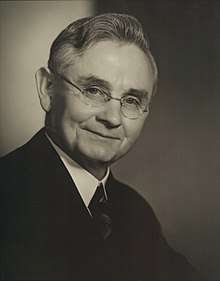
Party leader Michael Joseph Savage became Prime Minister on 6 December 1935, marking the beginning of Labour's first term in office. The new government quickly set about implementing a number of significant reforms, including a reorganisation of the social welfare system and the creation of the state housing scheme.[31] Workers also benefited from the introduction of the forty-hour week, and legislation making it easier for unions to negotiate on their behalf.[32] Savage himself was highly popular with the working classes, and his portrait could be found on the walls of many houses around the country.[33] At this time the Labour Party pursued an alliance with the Māori Rātana movement.[34]
The opposition, meanwhile, attacked the Labour Party's more left-wing policies and accused it of undermining free enterprise and hard work. The year after Labour's first win, the Reform Party and the United Party took their coalition to the next step, agreeing to merge with each other. The combined organisation was named the National Party, and would be Labour's main rival in future years.[35]

Labour also faced opposition from within its ranks. While the Labour Party had been explicitly socialist at its inception, it had been gradually drifting away from its earlier radicalism. The death of the party's former leader, the "doctrinaire" Harry Holland, had marked a significant turning point in the party's history. Some within the party, however, were displeased about the changing focus of the party, most notably John A. Lee. Lee, whose views were a mixture of socialism and social credit theory, emerged as a vocal critic of the party's leadership, accusing it of behaving autocratically and of betraying the party's rank and file. After a long and bitter dispute, Lee was expelled from the party, establishing his own breakaway Democratic Labour Party.[36]
Savage died in 1940 and was replaced by Peter Fraser, who became Labour's longest-serving prime minister. Fraser is best known as New Zealand's leader for most of World War II. In the post-war period, however, ongoing shortages and industrial problems cost Labour considerable popularity, and the National Party, under Sidney Holland, gained ground although Labour was able to win the 1943 and 1946 elections. Eventually, in the 1949 election, Labour was defeated.[37]
Fraser died shortly afterward, and was replaced by Walter Nash, the long-serving Minister of Finance.[38] It was to be some time before Labour would return to power; however – Nash lacked the charisma of his predecessors, and National won considerable support for opposing the "industrial anarchy" of the 1951 waterfront dispute. In the 1957 election, however, Labour had a narrow majority of two seats, and returned to office.
Second Government (1957–1960) and opposition
Nash, Labour's third prime minister, took office in late 1957. Upon coming to power, Labour decided that drastic measures were needed to address balance of payments concerns.[39] This resulted in the highly unpopular "Black Budget" of Arnold Nordmeyer, the new Minister of Finance, which raised taxes on alcohol, cigarettes, cars, and petrol.[40] It is widely thought to have doomed the party to defeat despite the economy having rejuvenated less than a year after the Black Budget was adopted.[40] In the 1960 election, the National Party returned to power.

The elderly Nash retired in 1963, suffering from ill health.[41] He was replaced by Nordmeyer, but the taint of the Black Budget ensured that Nordmeyer did not have any appreciable success in reversing the party's fortunes. In 1965, the leadership was assumed by the younger Norman Kirk, who many believed would revitalise the party. Labour was defeated again in the next two elections, but in the 1972 election, the party gained a significant majority over its rival.
Third Government (1972–1975) and opposition
Kirk proved to be an energetic Prime Minister and introduced a number of new policies. His foreign policy stances included strong criticism of nuclear weapons testing and of South Africa's apartheid system. Kirk's health was poor, however, and was worsened by his refusal to slow the pace of his work. In 1974, Kirk was taken ill and died. He was replaced by Bill Rowling, who did not have the same appeal – in the 1975 election, Labour was defeated by National, which was led by Robert Muldoon.[42]
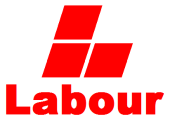
Rowling remained the leader of the Labour Party for some time after his defeat. In the 1978 election and the 1981 election Labour won a larger share of the vote than National but failed to win an equivalent number of seats. Rowling himself was compared unfavourably to Muldoon, and did not cope well with Muldoon's aggressive style. Rowling was eventually replaced by David Lange, who the caucus perceived as more charismatic.[43] In the snap election of 1984, Labour defeated the National party.
Fourth Government (1984–1990) and opposition
.jpg)
When the Fourth Labour Government came into power it uncovered a fiscal crisis that had been largely hidden by the outgoing Third National Government.[44] Government debt was skyrocketing, due largely to the costs of borrowing to maintain a fixed exchange rate. When the result of the election became clear Lange asked Muldoon to devalue the dollar, which he refused to do, resulting in a constitutional crisis and precipitating some of the changes in the Constitution Act 1986.[45]
The economic policy agenda of the Fourth Labour Government differed significantly from previous Labour governments. The Minister of Finance, Roger Douglas, was a supporter of free market theories, and sought to implement sweeping reforms ("Rogernomics") to the economy and tax system.[46][47] This involved floating the New Zealand dollar, cutting government spending, reducing taxes and removing almost all industry subsidies.[47] The government also revolutionised New Zealand's foreign policy, making the country a nuclear-free zone,[48] and effectively leaving the ANZUS alliance. Immigration policy was liberalised and migration from Asia was promoted.[49]
Other Fourth Labour Government innovations included extended the jurisdiction of the Waitangi Tribunal back to the date of the signing of the Treaty of Waitangi; Homosexual Law Reform, which legalised homosexual relations; and the Bill of Rights Act, which enumerated civil and political rights. Throughout its first term, the government remained largely unified behind the radical financial, economic and social policy reforms that were enacted but early signs of dissension began to appear before the 1987 election.[50]
In 1987 Labour won another considerable election victory against the National Party while ruptures over the direction of policy remained concealed. Despite taking votes from affluent areas, Labour suffered negative swings in more traditional seats, the blue ribbon seat of Remuera nearly fell into the Labour column. This second term, which increased Labour's majority and was won mostly on the back of its anti-nuclear stance, caused emerging divisions over economic policy to begin arising within Cabinet.[51] Ministers were divided on the extent and pace of further reforms, and there was a rebellion among party members and disillusion among Labour voters. The party was also criticised by the Council of Trade Unions. One vocal critic of government policy, Jim Anderton, left to establish the NewLabour Party which later formed the basis of the left-wing Alliance Party.[51][52] At the same time Roger Douglas and Lange fought intermittent battles inside Cabinet with Douglas wanting to dramatically expand his economic programme. A flat tax proposal by Douglas was strongly opposed by Lange who moved to sack him, resulting in political clashes throughout 1988, but Lange successfully removed him following extended struggles. After Douglas was re-elected to Cabinet the next year, Lange thereafter resigned from office himself in 1989, interpreting Douglas's reappointment as a vote of no confidence in his leadership.[53]
Lange was replaced by Geoffrey Palmer.[53] However, Palmer failed to rebuild the shattered remnants of Lange's government and, by September 1990, Palmer was replaced by Mike Moore. Despite Moore's ascension somewhat salvaging poll ratings Labour suffered its worst defeat since it first took office in 1935 (losing twenty-eight seats) and was flung into the political wilderness after their election landslide loss.[52] National swept to power seemingly repudiating the Lange/Douglas program but then engaged in even more radical policies than Labour had contemplated, political disillusionment caused by both governments was decisive in the later adoption of MMP.
Moore himself was eventually replaced by Helen Clark, despite recovering sixteen seats at the 1993 election. Clark led the party in opposition to the National government for six years under the administrations of Bolger (1993–1997) and Shipley (1997–1999). During this period in opposition, the party made a measured repudiation of Rogernomics, although it has never returned to its original leftist roots (Labour's contemporary position is left-of-centre).[3] When the 1996 election, the first conducted under the MMP electoral system, gave the balance of power to the centrist New Zealand First party, many believed that Labour would return to power, but in the end New Zealand First formed their own coalition arrangement with the National Party. Despite initially appearing coherent, the coalition became increasingly unstable and eventually collapsed, leaving the National Party to govern as a minority government from 1998 to 1999.
Fifth Government (1999–2008) and opposition
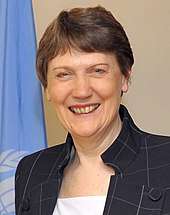
After the 1999 election, a coalition government of Labour and the Alliance took power, with Helen Clark becoming New Zealand's second female Prime Minister.[54] This government, while undertaking a number of reforms, was not particularly radical when compared to previous Labour governments, and maintained a high level of popularity. The Alliance, however, fell in popularity and split internally, the latter factor being one of the reasons cited by Clark for her calling the 2002 election several months early, which Labour comfortably won.[55]
Policies of the Fifth Labour Government include the KiwiSaver scheme,[56] the Working for Families package, increasing the minimum wage 5% a year, interest-free student loans, creation of District Health Boards, the introduction of a number of tax credits, overhauling the secondary school qualifications by introducing NCEA, and the introduction of fourteen weeks’ parental leave.[57] Labour also supported the Civil Union Act 2004, which legalised civil unions for same-sex and opposite-sex couples.[58]
In early 2004, Labour came under attack for its policies on the foreshore and seabed controversy.[59] There were significant internal tensions within the party, eventually culminating in the resignation of junior minister Tariana Turia and her establishment of the new Māori Party.[60]

Following the 2005 election, Labour formed a coalition with the Progressive Party (breakaway party of the old Alliance), and entered into complex confidence and supply agreements with the centrist United Future and New Zealand First parties, which gave both parties' leaders a ministerial portfolio, while remaining outside the Cabinet. A limited support agreement was also made with the Green Party, whereby certain policy concessions were to be made to the Greens in return for abstention on confidence and supply votes. Labour lost power when the National Party soundly defeated it in the 2008 election.
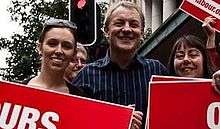
Following the loss to the National Party in the November 2008 election, Helen Clark stood down as leader of the party.[61] She was succeeded by Phil Goff (2008–2011).[62] Labour had a relatively high turnover of four leaders during its most recent term in opposition; this has been attributed in part to changes within public media and the political environment.[63] Goff led Labour into a second electoral defeat in 2011 and was succeeded by David Shearer (2011–2013).[64] Shearer resigned after losing the confidence of caucus. David Cunliffe (2013–2014) was elected in the 2013 leadership election.[65] Cunliffe was disliked by some factions within the Labour caucus but had strong support from the party membership. In the leadership contest he won first-preference votes from only one-third of Labour MPs.[66] Cunliffe's tenure as leader quickly became mired in internal disputes and falling poll ratings. Labour went on to suffer its worst electoral reversal since 1922 at the 2014 election, Cunliffe opted to resign after initially wishing to re-contest the leadership. He was replaced by Andrew Little (2014–2017). Little then resigned in 2017 following new polling showing the party sinking to a record low result of 24% with internal voices hoping rising star Jacinda Ardern would takeover in his stead.[67] Jacinda Ardern (2017–present) was confirmed as the new Labour leader.[67][68]
After Ardern's ascension to the leadership Labour rose dramatically in opinion polls. By late August they had risen to 43% in one poll (having been 24% under Little's leadership), as well as managing to overtake National in opinion polls for the first time in over a decade.[69]
Sixth Government (2017–present)
During the 2017 election, Labour gained 36.6% of the party vote and increased its presence in the House of Representatives to 46 seats, making it the second largest party in Parliament.[13]
On 19 October 2017, New Zealand First leader Winston Peters announced that his party would form a coalition government with Labour,[70] citing changing international and internal economic circumstances as the reasoning behind his decision,[71] coupled with a belief that a Labour government was best-placed to handle the social and economic welfare of New Zealanders in a global environment that was undergoing rapid and seismic change.[72] This coalition, combined with confidence and supply from the Green Party,[73] saw Labour return to government for the first time since 2008. Ardern became Prime Minister, with Peters as her deputy.[74]
The Labour government has pledged to eliminate child poverty, make tertiary education free, reduce immigration by 20,000–30,000, decriminalise abortion, and make all rivers swimmable within 10 years.[72]
In mid-July 2020, the Serious Fraud Office announced that it was investigating donations made to the Labour Party by two Chinese businessmen during the 2017 general election. Labour Party President Claire Szabó announced that the Party would be cooperating with the investigation.[75][76]
Ideology
Labour's 1916 policy objectives called for "the socialisation of the means of production, distribution and exchange", including state ownership of major parts of the economy, and increased rights for workers.[2] Up to the 1980s Labour remained a party that believed in a strong role for governments in economic and social matters. However, it had been transformed from a union-dominated, socialist-oriented movement into a moderate social-democratic party.[2][1][77] The Labour Government of the 1980s deviated sharply from a social-democratic path; in a series of economic reforms, the government removed a swathe of regulations and subsidies, privatised state assets and introduced corporate practices to state services.[78]
From the 1990s onwards, Labour has again aimed to use the power of the state to try to achieve a "fairer and more equal society", based on a mixed economy in which both the state and private enterprise play a part.[2] Subsequently, the party has also been described as embracing certain social liberal policies.[79][80]
Principles
According to its constitution (amended most recently in 2014), the party accepts "democratic socialist" principles, including:[81]
- The management of New Zealand's natural resources for the benefit of all, including future generations.
- Equal access to all social, economic, cultural, political, and legal spheres, regardless of wealth or social position.
- Co-operation as the main governing factor in economic relations, to ensure a just distribution of wealth.
- Universal rights to dignity, self-respect, and the opportunity to work.
- The right to wealth and property, subject to the provisos of regarding people as always more important than property and the obligations of the state to ensure a just distribution of wealth.
- Honouring the Treaty of Waitangi as the founding document of New Zealand.
- The promotion of peace and social justice throughout the world by international co-operation.
- Equality in human rights regardless of race, sex, marital status, sexual orientation, gender identity, age, religious faith, political belief or disability.
Voter base
Historically, the party drew upon a stable sectional voter base comprising the urban working class, predominantly manual labourers and trade unionists. From the 1930s onwards, Labour has increasingly positioned itself as a broad-based party by responding and adapting to different social and economic problems and changing demographics (appealing to an expanding migrant population and a diversified ethnic, social make-up).[2] Beginning in the 1980s, there was a shift away from class-issues and towards the promotion of individual freedoms, particularly for members of disadvantaged groups such as women and Māori. The modern party's core support base lies among young people, urban workers, civil servants, and minorities (particularly the Māori and Pacific Islander communities).[82][83]
Organisation
Party structure
General and special branches
Party membership is tied into geographically-based branches in each parliamentary electorate. General branches must consist of at least 10 members aged 15 or over.[84] Members may also form special branches where they have a special community of interest (such as university students and academics, young people, women, Māori people, Pacific Islanders, multicultural groups, people with disabilities, the rainbow community and industrial workers).[84] Influential branches include Princes Street Labour (this Auckland university branch is described as the "ideological powerhouse of the party",[85] and has contributed many prominent Labour politicians) and Vic Labour (the Victoria University of Wellington branch).[86]
- Labour Party membership, 1917–2002[87]
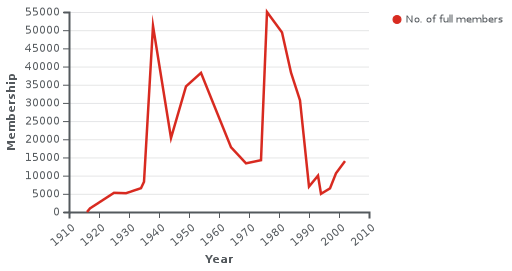
Membership figures are rarely released to the public. Full (non-affiliate) membership is known to have peaked at 55,000 in 1976. During the 1980s and 1990s, party membership plummeted to levels not seen since before the First Labour Government. This decline might be attributed to disillusionment on the part of some members with the economic policies of the Fourth Labour Government ("Rogernomics"). Membership figures began to recover under Helen Clark's leadership, with 14,000 members recorded in 2002.[88]
Conference, councils and committees
Delegates from all branches in the electorate, together with delegates from affiliated unions, make up the Labour Electorate Committee (LEC). The LEC is responsible for party organisation in the electorate.[84] The party is divided into six regional areas, which each year convene a Regional Conference.[89] Policy and other matters are debated and passed onto the Annual Conference.[84]
The Annual Conference (called Congress in election years) is the supreme governing body of the Labour Party when it is in session. All constituent bodies of the party are entitled to send delegates to Annual Conference.[84]
The New Zealand Council is the Labour Party's governing executive.[89] It ensures that the party is governed effectively according to its constitution. The NZ Council consists of the president, two senior vice presidents (one of which must be a Māori), three vice presidents (representing women, affiliates, and Pacific Islanders), seven regional representatives, one Policy Council representative, three Caucus representatives, and the general secretary.[84]
The Policy Council, responsible for the development of the policy platform and election manifesto,[9] is elected for a three-year term following each general election. The party structure also provides for Special Interest Group Councils: representing the affiliates, women's issues, Māori issues, Pacific Islands, primary industries, local government, and youth.[84]
Caucus and parliamentary leadership
.jpg)
The elected members representing the Labour Party in the House of Representatives meet as the Parliamentary Labour Party, also called the Caucus. The current parliamentary leader is Jacinda Ardern.[90] A leadership election is triggered upon the vacancy of the position of leader or a motion of no confidence. Candidates are nominated from within the Caucus. Under Labour Party rules, party members have 40% of the votes, MPs have another 40% of the votes, and affiliated unions have 20% of the votes.[84] Some observers have criticised the influence of the unions in leadership elections.[91]
Affiliated trade unions
In the first decades of the 20th century industries grew strongly in New Zealand's main cities and union membership also increased. The Labour Party was formed in this period as the political wing of the labour movement and was financed by trade unions. Since then, the unions have retained close institutional links with the party. There are currently six unions that are directly affiliated to the party and pay affiliation fees, as well as receiving a percentage of the vote in party leadership elections.[91] These unions are the following:
- E tū – created through the merger of the Engineering, Printing and Manufacturing Union and the Service & Food Workers Union in 2015.[92]
- Maritime Union of New Zealand (MUNZ)
- New Zealand Dairy Workers Union (DWU)
- New Zealand Meat & Related Trades Workers Union (MWU)
- Rail and Maritime Transport Union (RMTU)
- Central Amalgamated Workers' Union (CAWU)
In addition, the president of the New Zealand Council of Trade Unions continues to speak at the Labour Party Annual Conference.[93]
Young Labour
Young Labour is the party's youth wing. It exists to organise young members (under 26[94]) and encourage wider involvement of young New Zealanders in centre-left politics. Young Labour is the most active sector in the Labour Party and plays a significant role in policy development and campaign efforts. It is endearingly called the "conscience of the party".[95]
In March 2018, it was reported that four people under 16 were allegedly sexually assaulted at a Young Labour summer camp in February. The camp was said to have "mountains of alcohol", and people under the legal drinking age of 18 were said to have consumed alcohol. Although Young Labour and the Labour Party were aware of the allegations, party leadership failed to tell the Prime Minister, Jacinda Ardern. The party offered counselling and support after the allegations were publicly reported.[96][97] An independent review into the party's conduct and sexual assault complaint policy was announced by Party President Nigel Haworth, and was completed late August. The party has declined to release the report to the public.[98]
Local government
As of 2019, the Auckland Council had four councillors serving under the Labour ticket and one serving under the affiliated City Vision ticket. Overall, the centre-left maintain a majority and the incumbent mayor, Phil Goff, is a former leader of the party. In addition, there are 27 elected Labour Party community board members across Auckland, while City Vision holds 14 seats.
In New Plymouth, former MP Harry Duynhoven served as mayor from 2010–2013 where upon he was voted out of office. Lianne Dalziel was elected to be Mayor of Christchurch in the 2013 local body elections succeeding Sir Bob Parker, and former Rotorua electorate then list MP Steve Chadwick, was elected as Mayor of Rotorua in the 2013 elections, Both Dalziel and Chadwick ran however as independents.
In Christchurch, Labour maintains an umbrella, including community independents called The People's Choice (formerly Christchurch 2021). Labour candidates stand as 'The People's Choice (Labour)' and hold 10 community board seats, seven council seats, and several community board chairmanships.
Wellington has three Labour Party councillors: Fleur Fitzsimons – Southern Ward councillor, Teri O'Neill – Eastern Ward councillor and Rebecca Matthews – Onslow-Western Ward Councillor. There are many more local councillors in the Wellington region who are Labour Party members, but do not run as endorsed candidates of the party.
Daran Ponter of the Wellington City ward on the Greater Wellington Regional Council is the only councillor to have been elected on a Labour ticket, although other councillors such as Ros Connelly and Penny Gaylor have a history with the party. Campbell Barry has been the mayor of Lower Hutt since 2019, and was elected on a Labour ticket along with Wainuiomata ward councilor Keri Brown.
In Dunedin, the city councillor and former Labour MP David Benson-Pope announced on 26 February 2016 that he would be contesting the Dunedin local elections in October under the "Local Labour" ticket. While still a Labour Party member, Benson Pope had stood in the 2013 local elections as an independent candidate. This report coincided with the dissolution of the city's main local body ticket, the centre-left Greater Dunedin group. On 20 April, it was reported that the Labour Party had dropped its plan to field a bloc of candidates in the 2016 Dunedin elections. However, the Party has not ruled out endorsing other candidates.[99] In 2019, Steve Walker was elected to the Dunedin City Council and Marian Hobbs was elected to the Otago regional council, both on a Labour Party ticket.[100]
In Palmerston North, councillor Lorna Johnson and Zulfiqar Butt are the only two representatives to have been elected to the city council on a Labour ticket. However, there are several other councilors who are, or have been, members of the Labour Party who serve as independents.
In Whanganui, the town's mayor Hamish McDouall is a Labour member and previously contested the seat of Whanganui for the party. McDouall ran on an independent ticket.
In addition, there are many others councillors in almost all areas of New Zealand that are members or have previously had connections with the Labour Party, but have instead contested local elections as independents.
Electoral results
Parliamentary
- 1919–1993[101]

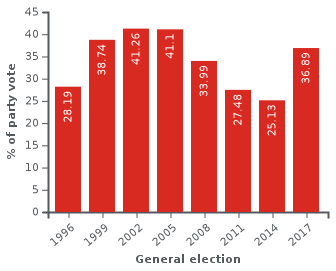
| Election | Party votes | Total % | Seats won | Status | ||
|---|---|---|---|---|---|---|
| 1919 | 131,402 | 24.2% |
8 / 80 |
Opposition | ||
| 1922 | 150,448 | 23.70% |
17 / 80 | |||
| 1925 | 184,650 | 27.20% |
12 / 80 | |||
| 1928 | 198,092 | 26.19% |
19 / 80 |
Junior in coalition with United | ||
| 1931 | 244,881 | 34.27% |
24 / 80 |
Opposition | ||
| 1935 | 434,368 | 46.17% |
53 / 80 |
Government | ||
| 1938 | 528,290 | 55.82% |
53 / 80 |
Government | ||
| 1943 | 522,189 | 47.6% |
45 / 80 | |||
| 1946 | 536,994 | 51.28% |
42 / 80 | |||
| 1949 | 506,073 | 47.16% |
34 / 80 |
Opposition | ||
| 1951 | 473,146 | 45.8% |
30 / 80 | |||
| 1954 | 481,631 | 44.1% |
35 / 80 | |||
| 1957 | 531,740 | 48.3% |
41 / 80 |
Government | ||
| 1960 | 420,084 | 43.4% |
34 / 80 |
Opposition | ||
| 1963 | 383,205 | 43.7% |
35 / 80 | |||
| 1966 | 382,756 | 41.4% |
35 / 80 | |||
| 1969 | 464,346 | 44.2% |
39 / 84 | |||
| 1972 | 677,669 | 48.37% |
55 / 87 |
Government | ||
| 1975 | 634,453 | 39.56% |
32 / 87 |
Opposition | ||
| 1978 | 691,076 | 40.41% |
40 / 92 | |||
| 1981 | 702,630 | 39.01% |
43 / 91 | |||
| 1984 | 829,154 | 42.98% |
56 / 95 |
Government | ||
| 1987 | 878,448 | 47.96% |
57 / 97 | |||
| 1990 | 640,915 | 35.14% |
29 / 97 |
Opposition | ||
| 1993 | 666,759 | 34.68% |
45 / 99 | |||
| 1996 | 584,159 | 28.19% |
37 / 120 |
Opposition | ||
| 1999 | 800,199 | 38.74% |
49 / 120 |
Government (coalition) | ||
| 2002 | 838,219 | 41.26% |
52 / 120 | |||
| 2005 | 935,319 | 41.10% |
50 / 121 | |||
| 2008 | 796,880 | 33.99% |
43 / 122 |
Opposition | ||
| 2011 | 614,936 | 27.48% |
34 / 121 | |||
| 2014 | 604,534 | 25.13% |
32 / 121 | |||
| 2017 | 956,184 | 36.89% |
46 / 120 |
Government (coalition) | ||
- Labour did not stand candidates in every electorate until 1946, when it stood candidates in all 80 electorates. According to the National Executive reports,[107] the number of official candidates in 1919 is uncertain (53 or possibly 46). The party ran 41 candidates in 1922; 56 in 1925; 55 in 1928; 53 in 1931; 70 in 1935; 78 in 1938; and 77 in 1943. Labour did not run against independent candidates who voted with Labour, such as Harry Atmore in Nelson and David McDougall in Mataura, Southland. Labour did not run candidates against the two Country Party candidates in 1935, but did in 1938, when both candidates were defeated.
Auckland local government
| Election | Candidates nominated | Seats won | ||||||
|---|---|---|---|---|---|---|---|---|
| Local board | Council | Health board | Licensing trust | Local board | Council | Health board | Licensing trust | |
| 2010 | 17/149 | 3/20 | 0/21 | 6/41 | 12 / 149 |
2 / 20 |
0 / 21 |
6 / 41 |
| 2013 | 27/149 | 4/20 | 2/21 | 8/35 | 20 / 149 |
2 / 20 |
1 / 21 |
7 / 35 |
| 2016 | 46/149 | 7/20 | 9/21 | 9/35 | 26 / 149 |
3 / 20 |
2 / 21 |
9 / 35 |
Leadership
The Labour Party has had seventeen leaders, ten of whom have served as Prime Minister. To date, Helen Clark served longest as leader of the Labour Party. While some dispute exists as to when Harry Holland officially became leader, by 26 October 2008, Clark had passed his longest possible leadership term.[108]
List of leaders
The following is a complete list of Labour Party leaders in the House of Representatives:
Key:
Labour
Reform
United
National
PM: Prime Minister
LO: Leader of the Opposition
†: Died in office
| No. | Leader | Portrait | Term of office | Position | Prime Minister | |||
|---|---|---|---|---|---|---|---|---|
| 1 | Alfred Hindmarsh | 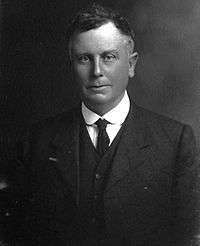 |
7 July 1916 | 13 November 1918† | — | Massey | ||
| 2 | Harry Holland | .jpg) |
27 August 1919 | 8 October 1933† | — | |||
| Bell | ||||||||
| LO 1926–1928 | Coates | |||||||
| Junior coalition partner 1928–1931 |
Ward | |||||||
| LO 1931–1933 | Forbes | |||||||
| 3 | Michael Joseph Savage |  |
12 October 1933 | 27 March 1940† | LO 1933–1935 | |||
| PM 1935–1940 | Savage | |||||||
| 4 | Peter Fraser | 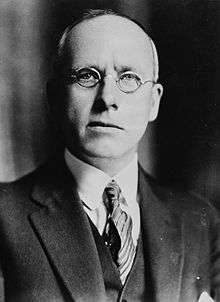 |
1 April 1940 | 12 December 1950† | PM 1940–1949 | Fraser | ||
| LO 1949–1950 | Holland | |||||||
| 5 | Walter Nash | .jpg) |
December 1950 | 31 March 1963 | LO 1951–1957 | |||
| Holyoake | ||||||||
| PM 1957–1960 | Nash | |||||||
| LO 1960–1963 | Holyoake | |||||||
| 6 | Arnold Nordmeyer | .jpg) |
1 April 1963 | 16 December 1965 | LO 1963–1965 | |||
| 7 | Norman Kirk | 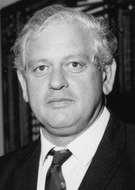 |
16 December 1965 | 31 August 1974† | LO 1965–1972 | |||
| Marshall | ||||||||
| PM 1972–1974 | Kirk | |||||||
| 8 | Bill Rowling |  |
6 September 1974 | 3 February 1983 | PM 1974–1975 | Rowling | ||
| LO 1975–1983 | Muldoon | |||||||
| 9 | David Lange | .jpg) |
3 February 1983 | 8 August 1989 | LO 1983–1984 | |||
| PM 1984–1989 | Lange | |||||||
| 10 | Geoffrey Palmer | 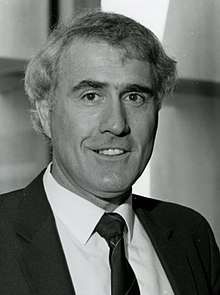 |
8 August 1989 | 4 September 1990 | PM 1989–1990 | Palmer | ||
| 11 | Mike Moore | .jpg) |
4 September 1990 | 1 December 1993 | PM 1990 | Moore | ||
| LO 1990–1993 | Jim Bolger | |||||||
| 12 | Helen Clark |  |
1 December 1993 | 19 November 2008 | LO 1993–1999 | |||
| Shipley | ||||||||
| PM 1999–2008 | Clark | |||||||
| 13 | Phil Goff | 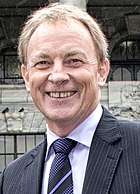 |
19 November 2008 | 13 December 2011 | LO 2008–2011 | Key | ||
| 14 | David Shearer | 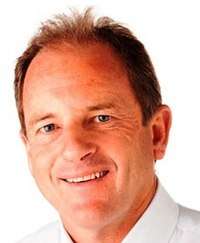 |
13 December 2011 | 15 September 2013 | LO 2011–2013 | |||
| 15 | David Cunliffe | 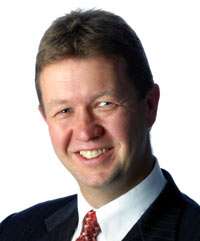 |
15 September 2013 | 30 September 2014 | LO 2013–2014 | |||
| 16 | Andrew Little | 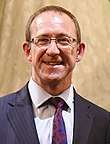 |
18 November 2014 | 1 August 2017 | LO 2014–2017 | |||
| English | ||||||||
| 17 | Jacinda Ardern | 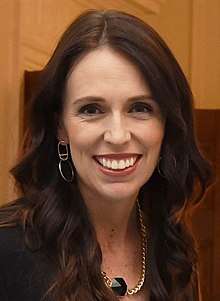 |
1 August 2017 | Incumbent | LO 2017 | |||
| PM 2017–present | Ardern | |||||||
List of deputy leaders
The following is a complete list of Labour Party deputy leaders:
| No. | Deputy leader | Term |
|---|---|---|
| 1 | James McCombs | 1919–1923 |
| 2 | Michael Joseph Savage | 1923–1933 |
| 3 | Peter Fraser | 1933–1940 |
| 4 | Walter Nash | 1940–1950 |
| 5 | Jerry Skinner | 1951–1962 |
| 6 | Fred Hackett | 1962–1963 |
| 7 | Hugh Watt | 1963–1974 |
| 8 | Bob Tizard | 1974–1979 |
| 9 | David Lange | 1979–1983 |
| 10 | Geoffrey Palmer | 1983–1989 |
| 11 | Helen Clark | 1989–1993 |
| 12 | David Caygill | 1993–1996 |
| 13 | Michael Cullen | 1996–2008 |
| 14 | Annette King | 2008–2011 |
| 15 | Grant Robertson | 2011–2013 |
| 16 | David Parker | 2013–2014 |
| 14 | Annette King | 2014–2017 |
| 17 | Jacinda Ardern | 2017 |
| 18 | Kelvin Davis | 2017–present |
List of presidents
The following is a complete list of Labour Party presidents:[109]
| No. | President | Term |
|---|---|---|
| 1 | James McCombs | 1916–1917[110] |
| 2 | Andrew Walker | 1917–1918 [111] |
| 3 | Tom Paul | 1918–1920[112] |
| 4 | Peter Fraser | 1920–1921 |
| 5 | Frederick Cooke | 1921–1922 |
| 6 | Tom Brindle | 1922–1926 |
| 7 | Bob Semple | 1926–1928 |
| 8 | John Archer | 1928–1929 |
| 9 | Jim Thorn | 1929–1931[113] |
| 10 | Rex Mason | 1931–1932 |
| 11 | Bill Jordan | 1932–1933 |
| 12 | Frank Langstone | 1933–1934 |
| 13 | Tim Armstrong | 1934–1935 |
| 14 | Walter Nash | 1935–1936 |
| 15 | Clyde Carr | 1936–1937 |
| 16 | James Roberts | 1937–1950[114] |
| 17 | Arnold Nordmeyer | 1950–1955 |
| 18 | Michael Moohan | 1955–1960 |
| 19 | Martyn Finlay | 1960–1964 |
| 20 | Norman Kirk | 1964–1966 |
| 21 | Norman Douglas | 1966–1970 |
| 22 | Bill Rowling | 1970–1973 |
| 23 | Charles Bennett | 1973–1976[115] |
| 24 | Arthur Faulkner | 1976–1978 |
| 25 | Jim Anderton | 1979–1984 |
| 26 | Margaret Wilson | 1984–1987 |
| 27 | Rex Jones | 1987–1988[116] |
| 28 | Ruth Dyson | 1988–1993 |
| 29 | Maryan Street | 1993–1995 |
| 30 | Michael Hirschfeld | 1995–1999 |
| 31 | Bob Harvey | 1999–2000 |
| 32 | Mike Williams | 2000–2009 |
| 33 | Andrew Little | 2009–2011 |
| 34 | Moira Coatsworth | 2011–2015 |
| 35 | Nigel Haworth | 2015–2019 |
| 36 | Claire Szabó | 2019–present[117] |
See also
- City Vision, a prominent Auckland City political ticket composed of New Zealand Labour, Green Party and Alliance members
- List of New Zealand Labour Party MPs
- List of New Zealand governments
- List of Labour parties
- Politics of New Zealand
Notes
- Clive Bean (2009). "New Zealand". In Mark N. Franklin; Thomas T. Mackie; Henry Valen (eds.). Electoral Change: Responses to Evolving Social and Attitudinal Structures in Western Countries. ECPR Press. p. 285. ISBN 978-0-9558203-1-1.
- Aimer, Peter. "Labour Party: Ideology and the role of unions". Te Ara: The Encyclopedia of New Zealand. Retrieved 13 December 2016.
- Boston, Jonathan (2003). New Zealand Votes: The General Election of 2002. Victoria University Press.
- "Voters' preexisting opinions shift to align with political party positions". Association for Psychological Science. 2 November 2018. Retrieved 26 November 2018 – via Science Daily.
- Papillon, Martin; Turgeon, Luc; Wallner, Jennifer; White, Stephen (2014). Comparing Canada: Methods and Perspectives on Canadian Politics. UBC Press. p. 126. ISBN 9780774827867. Retrieved 30 August 2016.
[...] [I]n New Zealand politics, by the centre-left Labour Party and the centre-right National Party [...].
- "Parties & Organisations". Progressive Alliance. Retrieved 22 July 2019.
- "Labour Party unveils new 2020 campaign slogan ahead of general election". TVNZ. 4 July 2020.
- "Ngā Rōpū Pāremata" (in Maori). New Zealand Parliament Pāremata Aotearoa. Retrieved 5 May 2017.
- "New Zealand Labour Party Policy Platform" (PDF). New Zealand Labour Party. March 2016. p. 5. Retrieved 13 June 2017.
The Labour Party's values are based on our founding principle of Democratic Socialism.
- New Zealand Labour Party (30 November 2019). "New Zealand Labour Party Constitution and Rules 2019" (PDF). Retrieved 7 January 2020.
The Party accepts the following democratic socialist principles [...].
- "New Zealand Labour Party founded". Ministry for Culture and Heritage. 23 December 2016. Retrieved 4 February 2017.
- Miller 2005, pp. 32–33.
- "2017 General Election – Official Result". New Zealand Electoral Commission. Retrieved 7 October 2017.
- Gustafson 1980, p. ix.
- "Returning to Labour's Roots". New Zealand Labour Party. 18 April 2016. Retrieved 19 June 2017.
- "History of the Labour Party: The labour movement in New Zealand". New Zealand Labour Party. Retrieved 19 June 2017.
- Gustafson 1980, p. 13.
- Gustafson 1980, pp. 13f.
- Gustafson 1980, pp. 17f.
- Wilson 1985, p. 216.
- Gustafson 1980, p. 19.
- McLintock, A. H., ed. (22 April 2009) [First published in 1966]. "Labour Party". An Encyclopaedia of New Zealand. Ministry for Culture and Heritage / Te Manatū Taonga. Retrieved 15 July 2015.
- "'Black Tuesday' – The 1912 Waihi strike". Ministry for Culture and Heritage. Retrieved 19 June 2017.
- "A Separate Identity". Sun. II (438). 6 July 1915. p. 11. Retrieved 30 March 2016.
- Franks & McAloon 2016, pp. 70–1.
- Miller 2005, p. 30.
- Derby, Mark (20 June 2012). "Conscription, conscientious objection and pacifism – Conscription". Te Ara: The Encyclopedia of New Zealand. Retrieved 19 June 2017.
- Lipson 2011, p. 211.
- Gustafson 1980, pp. 18.
- Franks & McAloon 2016, pp. 79.
- Aimer, Peter (20 June 2012). "Labour Party – First Labour government, 1935 to 1949". Te Ara: The Encyclopedia of New Zealand. Retrieved 19 June 2017.
- Epstein, Richard A. (2001). "Employment and Labor Law Reform in New Zealand Lecture". Case Western Reserve Journal of International Law. 33. Retrieved 19 June 2017.
- "Michael Joseph Savage". Ministry for Culture and Heritage. Retrieved 19 June 2017.
- "Rātana and Labour seal alliance – 22 April 1936". Ministry for Culture and Heritage. 17 May 2017. Retrieved 19 June 2017.
- Franks & McAloon 2016, pp. 100.
- "John A Lee". Ministry for Culture and Heritage. 30 March 2015. Retrieved 19 June 2017.
- Franks & McAloon 2016, pp. 133.
- Franks & McAloon 2016, pp. 136.
- Franks & McAloon 2016, pp. 152.
- Franks & McAloon 2016, pp. 154.
- Franks & McAloon 2016, pp. 160.
- Franks & McAloon 2016, pp. 184.
- "Wallace Rowling". nzhistory.govt.nz. Ministry for Culture and Heritage. 21 August 2014. Retrieved 16 November 2017.
- Miller 2005, pp. 38–39.
- "Patriated – History of the Governor-General". Ministry for Culture and Heritage. Retrieved 19 June 2017.
- Gray, Tim; Reardon, John (2007). "About Turn: An Analysis of the Causes of the New Zealand Labour Party's Adoption of Neo-Liberal Policies 1984–1990" (PDF). Political Quarterly. 78 (3): 447 455.
- Easton, Brian (11 March 2010). "Economic history – Government and market liberalisation". Te Ara: The Encyclopedia of New Zealand. Retrieved 17 July 2020.
- Lange, David (1990). Nuclear Free: The New Zealand Way. New Zealand: Penguin Books.
- Brawley, Sean (1993). "'No White Policy in NZ': Fact and Fiction in New Zealand's Asian Immigration Record, 1946–1978" (PDF). New Zealand Journal of History. 27 (1): 33–36.
- Holland-Boston 1988, p. ?.
- Miller 2005, p. 40.
- Vowles, Jack (2013). Voters' Vengeance: 1990 Election in New Zealand and the Fate of the Fourth Labour Government. Auckland University Press. pp. 14–15. ISBN 9781869407124.
- Hubbard, Anthony (23 November 2013). "The Reluctant Prime Minister". Stuff. Retrieved 24 December 2017.
- "Helen Clark". nzhistory.govt.nz. New Zealand Ministry for Culture and Heritage.
- Geddis, Andrew (2004). "The General Election in New Zealand, July 2002". Electoral Studies. 23 (1): 149, 155. doi:10.1016/s0261-3794(03)00036-2 – via Science Direct.
- "KiwiSaver Act 2006 No 40 (as at 01 April 2017), Public Act Contents". New Zealand Parliament. Retrieved 13 June 2017.
- Craig, Robert D. (2011). Historical Dictionary of Polynesia. ISBN 9780810867727.
- "Civil Union Bill — Procedure, Third Reading". New Zealand Parliament. 9 December 2004. Retrieved 13 June 2017.
- Barker, Fiona (June 2012). "Debate about the foreshore and seabed". Te Ara: The Encyclopedia of New Zealand. Retrieved 13 June 2017.
- Dunne, Peter (18 January 2010). "What to do about that foreshore and seabed?". The Dominion Post. Retrieved 13 June 2017.
- "Clark stands down after Key wins NZ election". The New Zealand Herald. 8 November 2008. Retrieved 8 November 2008.
- "Goff resignation sparks leader race". The New Zealand Herald. 29 November 2011. Retrieved 29 November 2011.
- Hager, Nicky, (2014) 'Dirty Politics: How Attack Politics in Poisoning New Zealand's Political Environment', Nelson: Craig Potton Publishing
- "David Shearer quits". Stuff.co.nz. 22 August 2013. Retrieved 22 August 2013.
- "Cunliffe wins Labour leadership". Stuff.co.nz. 15 September 2013. Retrieved 15 September 2013.
- Solutions, EIU Digital (17 September 2013). "New Labour leader chosen". country.eiu.com. Retrieved 4 September 2016.
- Watkins, Tracy (1 August 2017). "Jacinda Ardern new Labour leader as Andrew Little quits". Stuff.co.nz. Retrieved 1 August 2017.
- Graham, Charlotte (31 July 2017). "Jacinda Ardern Takes Over New Zealand Opposition as Election Looms". The New York Times. Retrieved 1 August 2017.
- "Little asked Ardern to lead six days before he resigned". The New Zealand Herald. 14 September 2017. Retrieved 15 November 2017.
- "Labour finally retake power after Winston Peters gives Jacinda Ardern his support". Stuff.co.nz. 19 October 2017. Retrieved 19 October 2017.
- "Winston Peters on why he chose a Labour-led government". New Zealand Herald. Retrieved 20 October 2017.
- Roy, Eleanor Ainge. "Jacinda Ardern to be New Zealand's next PM after Labour coalition deal". The Guardian. Retrieved 20 October 2017.
- "Green Party ratifies confidence and supply deal with Labour". New Zealand Herald. 19 October 2017. Retrieved 19 October 2017.
- Young, Audrey (23 October 2017). "Winston Peters to become Deputy Prime Minister, Foreign Minister". New Zealand Herald. Retrieved 10 September 2018.
- Devlin, Collette (13 July 2020). "Serious Fraud Office investigation into donations made to Labour Party in 2017". Stuff. Archived from the original on 14 July 2020. Retrieved 14 July 2020.
- Hurley, Sam (13 July 2020). "Serious Fraud Office launches investigation into Labour Party donations from 2017". New Zealand Herald. Archived from the original on 14 July 2020. Retrieved 14 July 2020.
- Rodney Smith; Ariadne Vromen; Ian Cook (2006). Keywords in Australian Politics. Cambridge University Press. p. 177. ISBN 978-0-521-67283-2.
- "Labour Party: Fourth and fifth Labour governments". Te Ara: The Encyclopedia of New Zealand. Retrieved 13 December 2016.
- Scott, Michael (2016). Making New Zealand's Pop Renaissance: State, Markets, Musicians. Routledge. pp. 34, 56.
- Vowles, Jack (1997). Political Science. 49–50. p. 98.
- "Labour: Constitution and Rules" (PDF). NZ Labour Party. 2014. p. 4. Archived from the original (PDF) on 14 July 2014. Retrieved 11 June 2014.
The Party accepts the following democratic socialist principles –
g. All political authority comes from the people by democratic means, including universal suffrage, regular and free elections with a secret ballot.
h. The natural resources of New Zealand belong to all the people and these resources, and in particular non-renewable resources, should be managed for the benefit of all, including future generations.
i. All people should have equal access to all social, economic, cultural, political and legal spheres, regardless of wealth or social position, and continuing participation in the democratic process.
j. Co-operation, rather than competition, should be the main governing factor in economic relations, in order that a greater amount and a just distribution of wealth can be ensured.
k. All people are entitled to dignity, self-respect and the opportunity to work.
l. All people, either individually or in groups, may own wealth or property for their own use, but in any conflict of interest people are always more important than property, and the state must ensure a just distribution of wealth.
m. Te Tiriti o Waitangi/The Treaty of Waitangi is the founding document of New Zealand, and that the Treaty should be honoured in the Party, government, society and the whanau.
n. Peace and social justice should be promoted throughout the world by international co-operation and mutual respect.
o. The same basic human rights, protected by the State, apply to all people, regardless of race, sex, marital status, sexual orientation, gender identity, age, religious faith, political belief or disability. - Bracewell-Worrall, Anna (10 February 2017). "What the data tells us: Māori and Pacific voters throw support behind Labour". Newshub. Retrieved 6 May 2018.
- Vowles, Jack (2013). Towards Consensus?: The 1993 Election and Referendum in New Zealand and the Transition to Proportional Representation. Auckland University Press. pp. 20–23. ISBN 9781869407162.
- "Constitution and Rules" (PDF). New Zealand Labour Party. July 2016. Retrieved 13 June 2017.
- "Princes Street". New Zealand Young Labour. Retrieved 13 June 2017.
- "VicLabour". New Zealand Young Labour. Retrieved 13 June 2017.
- "Labour Party membership, 1917–2002". Te Ara Encyclopedia of New Zealand. Retrieved 13 June 2017.
- Peter, Aimer. "Labour Party – Ideology and the role of unions: Labour Party membership, 1917–2002". Te Ara: The Encyclopedia of New Zealand. Retrieved 13 June 2017.
- Aimer, Peter (20 June 2012). "Labour Party – Organisation of the Labour Party". Te Ara: The Encyclopedia of New Zealand. Retrieved 13 June 2017.
- "Party Information". New Zealand Labour Party. Retrieved 4 February 2017.
- "Opinion: Unions rip off Labour leadership". Newshub. 18 November 2014. Retrieved 13 June 2017.
- "About Us". www.etu.nz. E tū. Archived from the original on 25 June 2017. Retrieved 13 June 2017.
- "Conference 2012 – New Zealand Labour Party". Archived from the original on 20 November 2012.
- "About Young Labour". New Zealand Young Labour. Retrieved 13 June 2017.
- "Young, gifted and politically aware". Stuff.co.nz. 4 November 2008. Retrieved 13 June 2017.
- "'We failed in our duty of care' – Labour leadership". Radio New Zealand. 14 March 2018. Retrieved 29 September 2018.
- "'We took too long' – Jacinda Ardern on alleged sex assaults at Young Labour camp". Newshub. 13 March 2018. Retrieved 29 September 2018.
- Bennett, Lucy (29 August 2018). "Jacinda Ardern defends not releasing Austen report into Labour summer camp". New Zealand Herald. Retrieved 29 September 2018.
- Elder, Vaughan (20 April 2016). "No Labour ticket; Hawkins, Vandervis declare hand". Otago Daily Times. Retrieved 29 April 2016.
- Morris, Chris (26 February 2016). "Greater Dunedin disbands". Otago Daily Times. Retrieved 30 March 2016.
- "General elections 1890-1993". Electoral Commission. 30 August 2016. Retrieved 16 November 2017.
- "General elections 1996-2005". Electoral Commission. 26 September 2017. Retrieved 16 November 2017.
- "Official results for the 2008 General Election". Electoral Commission. 22 November 2008. Retrieved 16 November 2017.
- "2011 General Election - Official Count Results". Electoral Commission. 17 December 2011. Retrieved 16 November 2017.
- "2014 General Election - Official Count Results". Electoral Commission. 10 October 2014. Retrieved 16 November 2017.
- "2017 General Election - Official Result". Electoral Commission. 23 September 2017. Retrieved 16 November 2017.
- Brown 1962, p. 225.
- Audrey Young (12 February 2008). "Clark beats record of longest-serving Labour leader – probably". The New Zealand Herald. Retrieved 12 February 2008.
- Brown 1962, p. 224.
- Garner, Jean. "McCombs, James". Dictionary of New Zealand Biography. Ministry for Culture and Heritage. Retrieved 28 January 2011.
- Gustafson 1980, pp. 168–169.
- Gustafson 1980, p. 164.
- Gustafson 1980, p. 168.
- Green, Anna. "Roberts, James". Dictionary of New Zealand Biography. Ministry for Culture and Heritage. Retrieved 6 May 2013.
- Ballara, Angela. "Charles Moihi Te Arawaka Bennett". Dictionary of New Zealand Biography. Ministry for Culture and Heritage. Retrieved 23 April 2013.
- "Rex Jones says goodbye after 37 years". NZ Amalgamated Engineering, Printing & Manufacturing Union. 22 December 2011. Archived from the original on 30 January 2016.
- "Claire Szabo elected new Labour Party president". 30 November 2019.
References
- Franks, Peter; McAloon, Jim (2016). Labour: The New Zealand Labour Party 1916–2016. Wellington: Victoria University Press. ISBN 978-1-77656-074-5.CS1 maint: ref=harv (link)
- Bassett, Michael (1976). The Third Labour Government: A Personal History. Dunmore Press.CS1 maint: ref=harv (link)
- Brown, Bruce (1962). The Rise of New Zealand Labour: A history of the New Zealand Labour Party. Wellington: Price Milburn.CS1 maint: ref=harv (link)
- Gustafson, Barry (1980). Labour's path to political independence: The Origins and Establishment of the New Zealand Labour Party, 1900–19. Auckland, New Zealand: Auckland University Press. ISBN 978-0-19-647986-6.CS1 maint: ref=harv (link)
- Gustafson, Barry (1986). From the Cradle to the Grave: A biography of Michael Joseph Savage. Auckland: Reed Methuen. ISBN 978-0-474-00138-3.CS1 maint: ref=harv (link) (with Biographical appendix)
- Holland, Martin; Boston, Jonathan, eds. (1988). The Fourth Labour Government: Politics and Policy in New Zealand. Oxford University Press.
- Lipson, Leslie (2011) [1948]. The Politics of Equality: New Zealand's Adventures in Democracy. Wellington: Victoria University Press. ISBN 978-0-86473-646-8.CS1 maint: ref=harv (link)
- Miller, Raymond (2005). Party Politics in New Zealand. Australia: Oxford University Press.CS1 maint: ref=harv (link)
- Wilson, James Oakley (1985) [First published in 1913]. New Zealand Parliamentary Record, 1840–1984 (4th ed.). Wellington: V.R. Ward, Govt. Printer. OCLC 154283103.CS1 maint: ref=harv (link)
External links
| Wikimedia Commons has media related to New Zealand Labour Party. |
- Official website

- Official website for City Vision – the Auckland Local Government Group that includes Labour candidates
